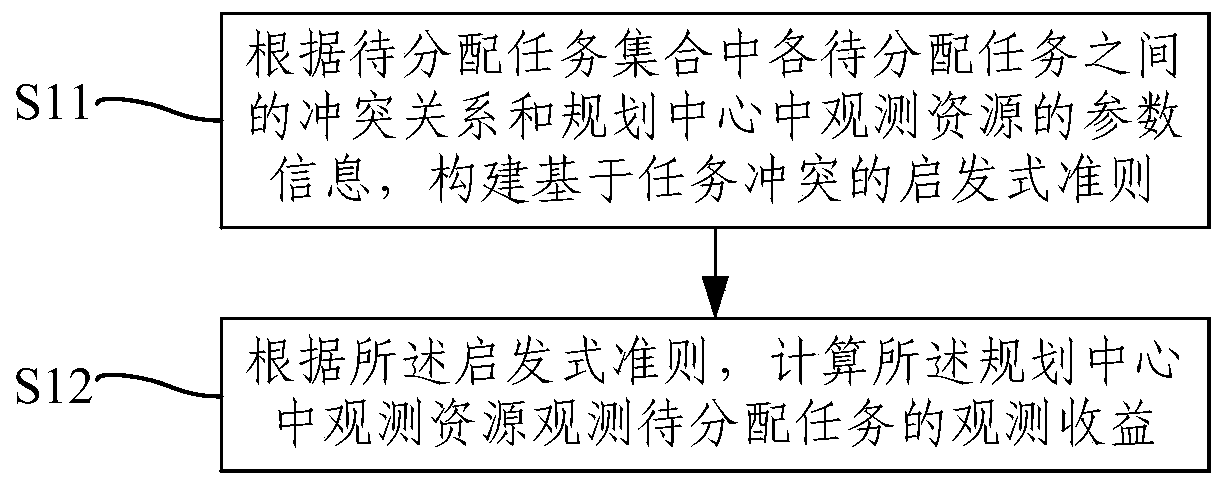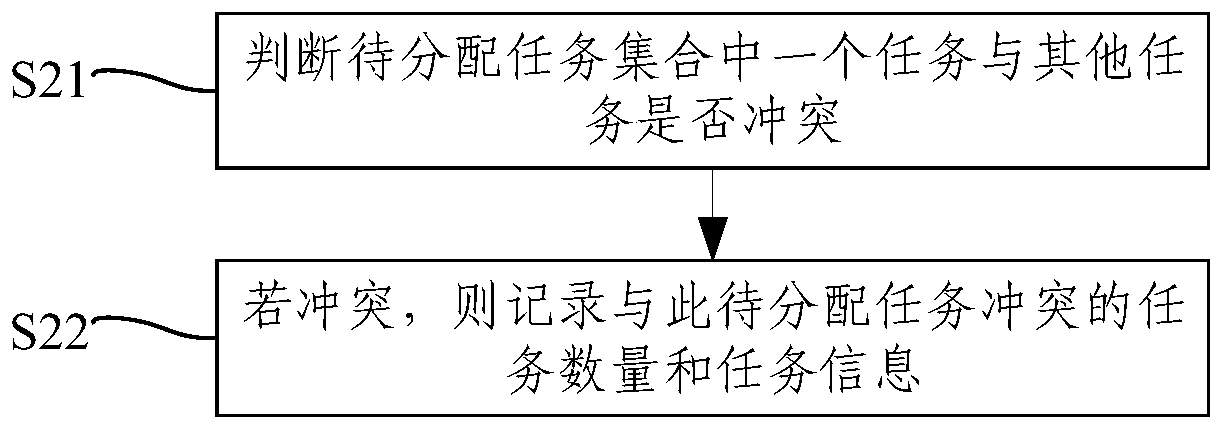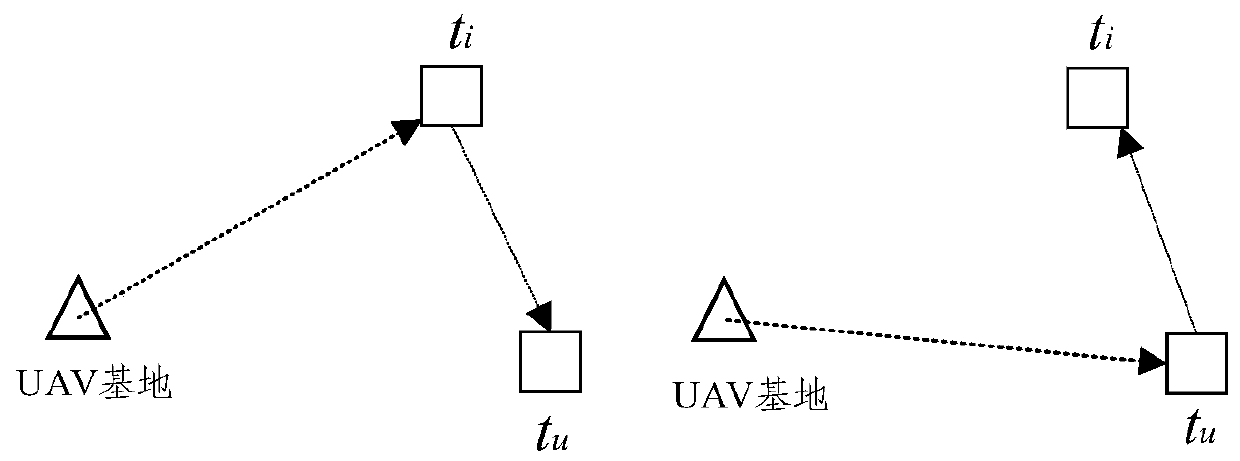A Collaborative Planning Method for Space-Space-Earth Observation Resources
A technology for space, space, and resources, which is applied in the field of collaborative planning of space, space and ground observation resources, and can solve problems such as the inability to meet the needs of multi-type observation platforms for space, space and ground collaborative observation, the inability to cooperate in depth, and the low return of mission observation.
- Summary
- Abstract
- Description
- Claims
- Application Information
AI Technical Summary
Problems solved by technology
Method used
Image
Examples
Embodiment 2
[0061] Embodiment 2 of the present invention differs from Embodiment 1 only in that it also includes judging the conflict relationship between tasks in the task set to be assigned before step S11. The specific method is as follows: figure 2Shown: S21, judging whether a task in the set of tasks to be assigned conflicts with other tasks; S22, if there is a conflict, recording the number of tasks and task information that conflict with the task to be assigned. Wherein, the task information includes: the time window of the task that conflicts with the task to be assigned, the coverage level between the task to be assigned, and other information of the task.
[0062] Step S21 may be specifically, judging whether the observation resource meets a task in the task set to be allocated and observes other tasks in the task set to be allocated, if the constraint condition is not satisfied, it is judged that this task conflicts with other tasks; the constraint The conditions include: one ...
PUM
 Login to View More
Login to View More Abstract
Description
Claims
Application Information
 Login to View More
Login to View More - R&D
- Intellectual Property
- Life Sciences
- Materials
- Tech Scout
- Unparalleled Data Quality
- Higher Quality Content
- 60% Fewer Hallucinations
Browse by: Latest US Patents, China's latest patents, Technical Efficacy Thesaurus, Application Domain, Technology Topic, Popular Technical Reports.
© 2025 PatSnap. All rights reserved.Legal|Privacy policy|Modern Slavery Act Transparency Statement|Sitemap|About US| Contact US: help@patsnap.com



